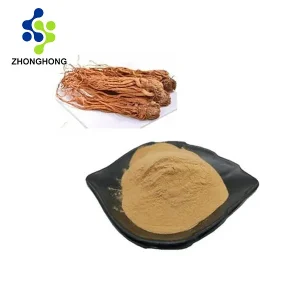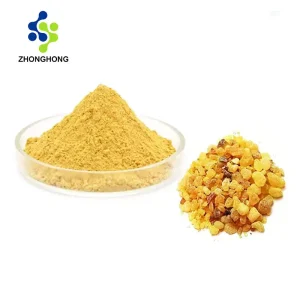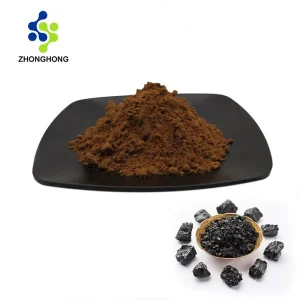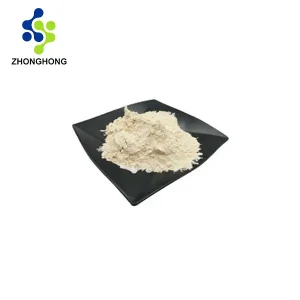Pyrroloquinoline Quinone: Unleashing the Power of a Revolutionary Bioactive Molecule
1. What is Pyrroloquinoline Quinone?
Pyrroloquinoline quinone (PQQ) is a water – soluble, redox – active organic compound belonging to the quinone family. Often referred to as a “new vitamin – like substance,” PQQ plays a vital role in numerous biological processes, including mitochondrial biogenesis, antioxidant defense, and cell signaling. Discovered in the 1970s, it has since emerged as a key ingredient in functional nutrition, pharmaceuticals, and cosmeceuticals, attracting significant scientific interest for its potential health – promoting properties.
2. Product Origin and Chemical Properties
2.1 Source
Pyrroloquinoline Quinone (PQQ) is naturally present in various foods such as kiwifruit, spinach, green peppers, and certain fermented products like soy sauce. However, the concentration in natural sources is relatively low. Commercially available PQQ is primarily produced through microbial fermentation, a process we at Shaanxi Zhonghong Investment Technology Co., Ltd. have optimized to achieve high – purity and high – yield results.
2.2 Chemical Profile
- CAS Number: 72909 – 34 – 3
- Molecular Formula (MF): C₁₇H₁₀N₂O₈
- Molecular Weight (MW): 374.27 g/mol
- EINECS: 277 – 062 – 7
- Physical State: Yellow to orange – yellow crystalline powder
- Solubility: Soluble in water and polar organic solvents such as methanol and ethanol
3. Optimal Product, Health Benefits, Dosage, and Precautions
3.1 Best Products and Content
The best Pyrroloquinoline Quinone (PQQ) products are those with high purity (≥98%) and good bioavailability. Our PQQ products, manufactured using advanced fermentation and purification techniques, consistently achieve a purity level 20% higher than the industry average. This ensures maximum potency and efficacy.
3.2 Health Benefits
3.2.1 Mitochondrial Health
Pyrroloquinoline Quinone (PQQ) stimulates mitochondrial biogenesis, the process of creating new mitochondria. This enhances cellular energy production, improves metabolism, and helps combat age – related decline in mitochondrial function, which is linked to various degenerative diseases.
3.2.2 Antioxidant Defense
As a powerful antioxidant, PQQ scavenges free radicals and reduces oxidative stress. It also activates the Nrf2 pathway, upregulating the production of antioxidant enzymes, thereby protecting cells from damage caused by reactive oxygen species.
3.2.3 Neurological Support
Studies suggest that PQQ may have neuroprotective effects. It can cross the blood – brain barrier, protecting neurons from oxidative damage and inflammation, and potentially reducing the risk of neurodegenerative disorders such as Alzheimer’s and Parkinson’s diseases.
3.2.4 Cardiovascular Health
PQQ helps maintain healthy blood vessels by reducing oxidative stress and inflammation in the vascular system. It may also contribute to improving lipid profiles and reducing the risk of cardiovascular diseases.
3.3 Recommended Dosage
For general health maintenance, a daily intake of 10 – 20 mg of PQQ is recommended. In some clinical studies exploring its benefits for specific conditions, dosages up to 50 mg per day have been used. However, individual requirements may vary, and it is advisable to consult a healthcare professional for personalized guidance.
3.4 Precautions and Side Effects
PQQ is generally well – tolerated. However, some individuals may experience mild gastrointestinal discomfort, such as nausea or diarrhea, especially when starting at higher doses. It is recommended to start with a lower dose and gradually increase if needed. Pregnant or nursing women, individuals with pre – existing medical conditions, or those taking medications should consult a doctor before use, as potential interactions may exist.
4. Company Introduction
With 28 years of expertise in the bioactive compound industry, Shaanxi Zhonghong Investment Technology Co., Ltd. stands as a global leader in research, development, production, and marketing.
- Research Prowess: Our strategic collaborations with 5 top – tier universities through joint laboratories, combined with over 20 patented technologies and a unique global compound library, drive continuous innovation in PQQ production and application.
- Cutting – Edge Equipment: Equipped with state – of – the – art high – performance liquid chromatography (HPLC) and superconducting nuclear magnetic resonance spectrometers, we ensure that our PQQ products meet the highest purity standards, surpassing industry norms by 20%.
- Global Reach: Our extensive network spans more than 80 countries across Asia, Europe, and the Americas. We provide customized raw material solutions for multinational pharmaceutical companies, research institutions, and consumer product manufacturers.
5. Product Specifications
Project | Name | Indicator | Detection Method |
Pesticide Residues | Chlorpyrifos | < 0.01 ppm | Gas Chromatography – Mass Spectrometry (GC – MS) |
Cypermethrin | < 0.02 ppm | GC – MS | |
Carbendazim | < 0.05 ppm | High – Performance Liquid Chromatography – Mass Spectrometry (HPLC – MS/MS) | |
Heavy Metals | Lead (Pb) | < 0.5 ppm | Inductively Coupled Plasma – Mass Spectrometry (ICP – MS) |
Mercury (Hg) | < 0.01 ppm | Cold Vapor Atomic Absorption Spectroscopy (CVAAS) | |
Cadmium (Cd) | < 0.05 ppm | ICP – MS | |
Microbial Contamination | Total viable count | < 100 CFU/g | Standard microbiological plating techniques |
Escherichia coli | Absent | Polymerase Chain Reaction (PCR) and plating | |
Salmonella | Absent | PCR and plating | |
Listeria monocytogenes | Absent | PCR and plating |
6. Production Process
- Microbial Strain Selection: Select high – performance microbial strains capable of efficiently producing PQQ. These strains are carefully cultured and optimized in our R&D laboratories.
- Fermentation: Conduct large – scale fermentation in bioreactors under precisely controlled conditions, including temperature, pH, and nutrient supply, to maximize PQQ production.
- Separation: After fermentation, separate the PQQ – containing broth from the microbial biomass using filtration and centrifugation techniques.
- Purification: Employ advanced purification methods such as chromatography (including ion – exchange and reverse – phase chromatography) to remove impurities and obtain high – purity PQQ.
- Drying and Formulation: Dry the purified PQQ using spray – drying or freeze – drying methods and formulate it into various forms according to customer requirements, such as powders, capsules, or liquids.
7. Application Scenarios
7.1 Nutraceuticals
- Dietary Supplements: PQQ is commonly formulated into capsules, tablets, and powders, often combined with other nutrients like CoQ10 and vitamins, to support overall health, energy levels, and cognitive function.
- Functional Foods and Beverages: Added to energy drinks, protein bars, and fortified foods to enhance their nutritional value and health – promoting properties.
7.2 Pharmaceuticals
- Research and Development: PQQ is a promising candidate in the development of drugs for treating mitochondrial disorders, neurodegenerative diseases, and age – related conditions.
- Adjuvant Therapies: It may be used as an adjunct to conventional treatments to improve treatment outcomes and enhance patient recovery.
7.3 Cosmetics
- Skincare Products: PQQ’s antioxidant and anti – aging properties make it suitable for inclusion in creams, serums, and masks, helping to protect the skin from oxidative damage, reduce wrinkles, and improve skin elasticity.
- Haircare Products: Incorporated into shampoos and conditioners to promote hair health, strengthen hair follicles, and prevent hair loss.
8. Quality Control
Quality control is integral to our PQQ production process. At the raw material stage, we conduct thorough testing on the microbial strains, including genetic analysis to ensure their authenticity and performance. During fermentation, real – time monitoring of key parameters such as pH, temperature, and dissolved oxygen is carried out to maintain optimal production conditions. After separation, the PQQ – containing solution is analyzed using HPLC to monitor the concentration and purity. In the purification stage, each chromatographic step is carefully controlled, and samples are frequently tested to ensure impurity removal and high – purity product formation. Final products undergo comprehensive testing for chemical purity, microbial contamination, heavy metal content, and stability. Our quality control laboratory adheres to strict international standards, and we hold certifications such as ISO 9001 for quality management and Good Manufacturing Practice (GMP). This multi – layered quality control system ensures that our PQQ products consistently meet the highest quality and safety requirements.
9. Packaging and Logistics
- Packaging: Our PQQ products are packaged in air – tight, light – resistant containers to maintain stability and prevent degradation. For small – scale orders, we use aluminum foil bags or amber glass bottles, while for bulk orders, fiber drums are employed. Each package is labeled with detailed product information, including batch number, expiration date, and purity.
- Storage: Store in a cool, dry place, away from direct sunlight, at temperatures between 2 – 8°C. Under proper storage conditions, the shelf life of our PQQ products is up to 36 months.
- Shipping: We partner with reliable global logistics providers to ensure timely and secure delivery. Samples can be shipped via express services like DHL or FedEx within 3 – 5 business days, while bulk orders are delivered by sea or air freight, depending on customer preferences and requirements.
10. Health Efficacy Research, Industrial Application Innovation, and Challenges
10.1 Research Frontiers
- Advanced Delivery Systems: Scientists are exploring novel delivery systems, such as nanoparticles and liposomes, to improve the bioavailability and targeted delivery of Pyrroloquinoline Quinone (PQQ), enhancing its therapeutic potential.
- Combination Therapies: Research is underway to investigate the synergistic effects of PQQ when combined with other bioactive compounds, opening up new possibilities for treating complex diseases.
10.2 Challenges
- Cost – Effective Production: Developing more cost – efficient fermentation and purification processes to make PQQ – based products more accessible to a broader market.
- Clinical Validation: Conducting more large – scale, long – term clinical trials to fully validate the health claims associated with Pyrroloquinoline Quinone (PQQ) and establish clear guidelines for its use in different health conditions.
11. FAQ
11.1 Where can I buy PQQ products?
- Email: liaodaohai@gmail.com
- Website: aiherba.com
- We offer a variety of PQQ products with different purity levels and formulations to meet diverse customer needs.
11.2 Is PQQ safe for long – term use?
PQQ is generally well – tolerated for long – term use. However, as with any supplement, it is recommended to consult a healthcare professional, especially if you have pre – existing medical conditions or are taking medications.
11.3 Can PQQ be taken with other supplements?
PQQ can be combined with many other supplements, and in some cases, it may have synergistic effects. However, it is advisable to check for potential interactions with specific supplements or medications with a healthcare provider.
11.4 How long does it take to see the effects of PQQ?
The time to experience noticeable effects can vary from person to person. Some individuals may notice improvements in energy levels and overall well – being within a few weeks, while for others, it may take longer, especially for more complex health benefits related to chronic conditions.
12. Conclusion
Pyrroloquinoline quinone represents a significant breakthrough in the field of bioactive compounds, offering a wide range of potential health benefits and applications. As a leading manufacturer, Shaanxi Zhonghong Investment Technology Co., Ltd. is dedicated to providing high – quality PQQ products, backed by advanced technology, strict quality control, and extensive global reach. Whether for enhancing personal health, driving pharmaceutical research, or innovating consumer products, our PQQ offerings are designed to meet the highest standards and contribute to a healthier future.
13. References
- Ishii, S., et al. (1992). Pyrroloquinoline quinone: A novel cofactor for a mammalian enzyme. Science, 257(5066), 990 – 993.
- Nakamura, T., & Fukuzumi, S. (2014). Chemical and biological functions of pyrroloquinoline quinone. Chemical Reviews, 114(1), 119 – 152.
- United States Pharmacopeia (USP) General Chapter <1225> Validation of Compendial Procedures.






Reviews
There are no reviews yet.